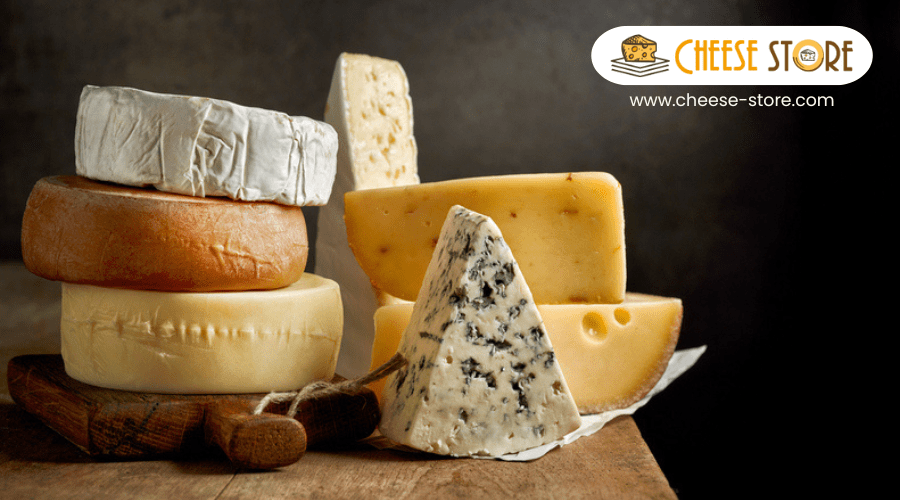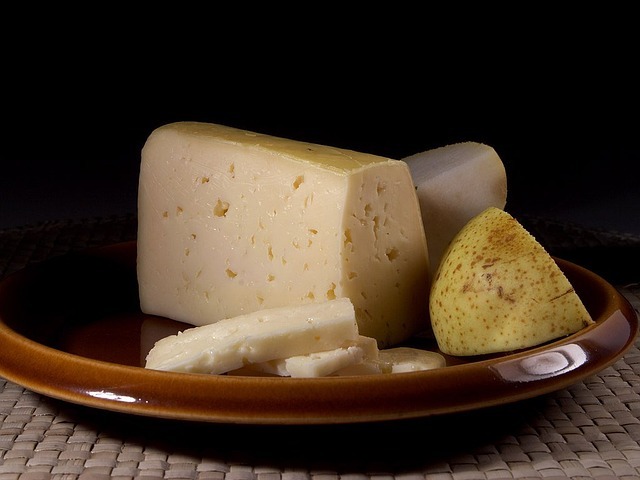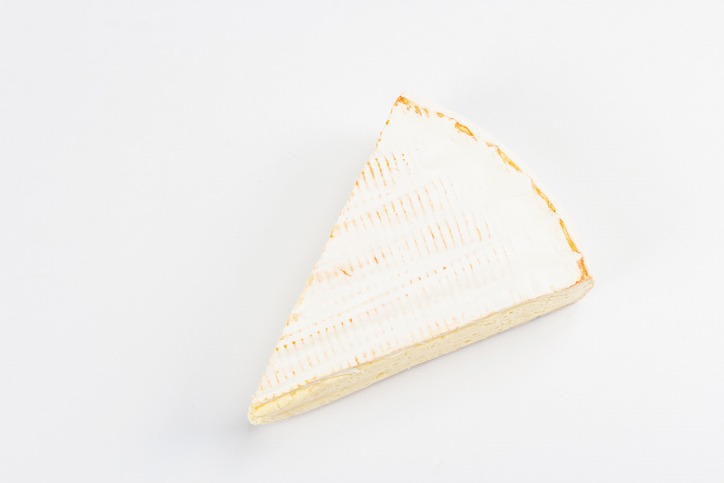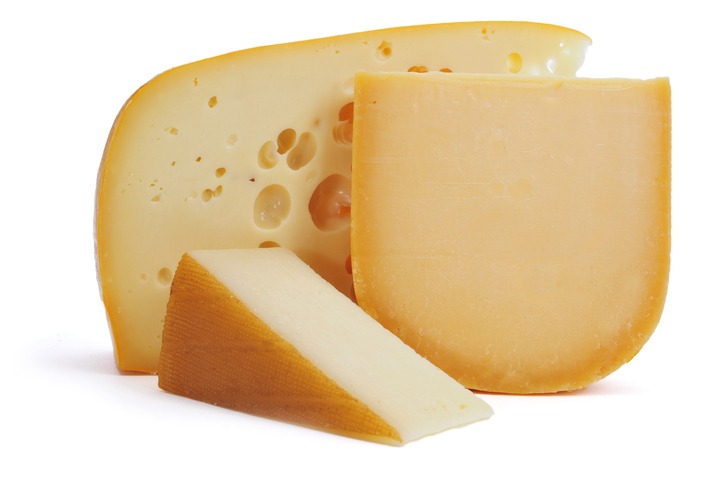Exploring the world of cheese doesn’t have to be as intricate as it might initially appear. You’re about to set off on a journey that will demystify the cheese-making process from the ground up, covering everything from the creamy, soft delights to the robust, hard varieties that command respect on any platter. By understanding the nuances of cheese types, from semi-soft to hard, you’ll not only enhance your culinary palette but also elevate your hosting game to a new level. Let’s explore why knowing your Gouda from your Gruyère is more than just a party trick.
Key Takeaways
- Semi-soft cheeses balance creamy and firm textures, perfect for versatile culinary uses.
- Semi-hard cheeses, like Gouda and Cheddar, offer a balance between moisture and firmness, aging to develop distinct flavors.
- Hard cheeses are known for their firm textures and sharp flavors, ideal for grating over dishes or enjoying as is.
- Blue cheeses feature unique blue veining and tangy flavors, adding bold character to cheese boards and recipes.
Cheese Ingredients Explained
To truly appreciate the vast world of cheeses, understanding the basic ingredients that give each cheese its unique taste, texture, and color is essential. At the heart of every cheese is milk, the foundational element that’s transformed through the magical interplay of culture and enzyme. These ingredients, along with salt, are key to creating the diversity of cheeses you love.
Milk, sourced from cows, goats, sheep, or even buffalo, sets the stage for cheese’s flavor and richness. The type of milk and its quality directly influence the cheese’s final taste and texture. Adding culture to milk starts the fermentation process, introducing distinct flavors and aiding in the cheese’s development. The enzyme, often rennet, coagulates the milk, separating it into curds and whey and shaping the cheese’s body.
The combination and proportions of these ingredients determine whether you’re biting into a soft, creamy Brie or savoring a hard, aged Parmesan. It’s fascinating how variations in milk, culture, and enzyme can produce an array of cheeses, each with its unique characteristics. Understanding these basics lets you navigate the cheese world with greater appreciation and discernment.
Fresh Cheeses Unveiled
You’ve likely encountered fresh cheeses like chèvre and ricotta, which are celebrated for their mild flavors and creamy textures. These cheeses aren’t aged, making them unique in both taste and culinary flexibility. Let’s explore the characteristics that define fresh cheeses and introduce some popular varieties you might want to try.
Fresh Cheese Characteristics
Diving into the world of fresh cheeses reveals that they’re not aged, capturing the essence of fresh milk in both flavor and texture. Unlike their aged counterparts, fresh cheese boasts a mild, slightly acidic taste that distinguishes it. This unique flavor profile stems from the lack of aging, which preserves the original, delicate nuances of the milk used in their creation. Additionally, their texture is soft and often creamy, offering a contrast to the firm or crumbly textures found in older cheeses. To fully appreciate these subtle tastes and textures, it’s best to enjoy fresh cheeses shortly after they’re produced. They’re incredibly versatile, serving as perfect additions to salads, pastas, sandwiches, and as toppings, enhancing dishes with their gentle, fresh flavors.
Popular Fresh Cheeses
Exploring the domain of popular fresh cheeses, you’ll discover varieties like chèvre, feta, and fresh mozzarella, each celebrated for their distinct textures and flavors. These cheeses, high in moisture content, are soft and creamy, making them a favorite in kitchens worldwide.
| Cheese Type | Use |
|---|---|
| Chèvre | Salads, appetizers |
| Feta | Greek salads, pastries |
| Fresh Mozzarella | Pizzas, Caprese salad |
| Ricotta | Desserts, lasagna |
Fresh cheeses are not aged, preserving the fresh milk flavor with a mild, slightly acidic taste. They’re versatile, ideal for a range of dishes from salads to desserts. Best served at room temperature, these cheeses truly shine, allowing you to savor their unique qualities.
Soft-Ripened Cheeses Decoded
Soft-ripened cheeses, with their creamy textures and complex flavors, are a must-try for any cheese aficionado. These cheeses, known for their high moisture and fat content, truly come alive at room temperature, allowing their rich flavors to fully emerge. As they age, they develop into a pudding-like consistency that’s both rich and creamy, offering a taste experience that’s as complex as it is delicious.
Here’s what makes soft-ripened cheeses stand out:
- High moisture and fat content: This gives them their irresistible creaminess.
- Pudding-like texture: Achieved as they age, making them uniquely satisfying.
- Examples: Including the likes of Brie, Camembert, and soft-ripened goat cheese.
- Flavor range: These cheeses offer a wide spectrum of flavors that intensify with ripening.
- Velvety white rind: Not only adds a distinctive look but also enhances the overall flavor profile.
Whether you’re sampling a slice of Brie, enjoying the rich complexity of Camembert, or exploring the subtle nuances of soft-ripened goat cheese, you’re in for a treat. The combination of their creamy texture, distinctive rind, and evolving taste profiles makes soft-ripened cheeses a fascinating category to explore.
Delving Into Semi-Soft Cheeses
You’re about to explore the world of semi-soft cheeses, where the moisture content of 45-50% brings out a smooth and creamy texture. From the mild flavors of Bel Paese, Port Salut, and Havarti, you’ll learn what makes these cheeses stand out. Plus, get tips on how best to pair and serve them to elevate your next meal or cheese platter.
Defining Semi-Soft Cheeses
Diving into the world of semi-soft cheeses, you’ll find varieties like Bel Paese and Brick, which boast a moisture content of 40-50%, striking the perfect balance between creamy and firm textures. These cheeses are aged for 3 months to 2 years, allowing them to develop a unique array of flavors. They’re commonly used for slicing or melting, making them incredibly versatile.
- Moisture Content: 40-50%, creating the perfect balance of textures.
- Aging Process: Ranges from 3 months to 2 years, contributing to flavor development.
- Usage: Ideal for slicing or melting, enhancing their versatility.
- Flavor Range: As they mature, they reveal a spectrum of flavors.
- Examples: Includes cheeses like Asiago and American process cheese, offering variety.
Popular Varieties Explored
Exploring popular varieties, let’s take a closer look at some standout semi-soft cheeses that could become your new favorites. Semi-soft cheeses, with their 45-50% moisture content, offer a delightful range of textures and tastes. Bel Paese, straight from Italy, brings a buttery, mild flavor to your palate. Its supple texture, which firms up as it ages, makes it a versatile choice beyond just a simple snack. Then there’s the incredibly meltable American process cheese. While not a traditional cheese, its creamy consistency is unbeatable in sandwiches and melts. Finally, don’t overlook Fontina. Also hailing from Italy, its nutty, earthy flavor and superb melting qualities make it perfect for elevating fondues and grilled cheese sandwiches to a whole new level.
Pairing and Serving Tips
When it comes to pairing and serving semi-soft cheeses, it’s all about finding the perfect balance of flavors and textures to enhance your culinary experience. Here are some tips to get you started:
- Pair Havarti and Muenster with fruits, nuts, and honey for a balanced flavor profile.
- Always serve semi-soft cheeses at room temperature to fully appreciate their flavors and creamy textures.
- Use versatile semi-soft cheeses like Fontina and Gouda to melt into dishes, adding a rich touch to grilled cheese sandwiches or pasta.
- Match semi-soft cheeses with medium-bodied wines like Pinot Noir or Chardonnay for a delightful taste experience.
- Create cheese boards featuring semi-soft cheeses to offer a mix of flavors and textures for your guests to enjoy.
The World of Semi-Hard Cheeses
Venturing into the domain of semi-hard cheeses, you’ll discover varieties that strike a perfect balance between the creamy softness and dense texture of other cheese types. Semi-hard cheeses, with a moisture content of 40-50% and aged between 3 months to 2 years, are a delight for those who appreciate complexity in flavor and versatility in use. Particularly, aged Gouda and Cheddar shine as examples of how aging can enhance the depth and richness of cheese.
| Cheese Type | Description |
|---|---|
| Aged Gouda | Develops caramel notes and a firm yet creamy texture. |
| Cheddar | Offers a sharp, tangy flavor that intensifies with age. |
| Asiago | Known for its nutty flavor and slightly crumbly texture. |
| Bel Paese | A milder option, perfect for melting over dishes. |
These cheeses are not just for snacking; they’re ideal for cooking, melting, or creating the perfect cheese board paired with fruits and nuts. Their balanced nature makes semi-hard cheeses incredibly adaptable to a variety of culinary needs, ensuring there’s always a place for them in your kitchen.
Hard Cheeses Demystified
After examining semi-hard cheeses, let’s now focus on the robust world of hard cheeses, celebrated for their firm texture and sharp flavors. These cheeses, including favorites like Aged Manchego and Parmigiano-Reggiano, are known for their distinctive, matured taste that comes from a longer aging process. This process not only intensifies their flavors but also develops unique characteristics that cheese lovers cherish.
Here are some key points to keep in mind about hard cheeses:
- Aged Manchego and Parmigiano-Reggiano stand out for their firm texture and sharp, nuanced taste.
- Grating cheeses, such as Aged Asiago and Pecorino Romano, fall into the hard cheese category due to their ideal texture for grating.
- The extended aging process enhances the flavor profile, making them perfect for adding depth to dishes.
- These cheeses are versatile, acting as the perfect topping for pasta, salads, and soups, or enjoyed alone as a rich snack.
- Despite their firmness, hard cheeses like Pecorino Romano can be a delightful addition to any cheese board, offering a savory counterpoint to softer varieties.
Blue Cheese Varieties
Blue cheese varieties, such as Gorgonzola and Roquefort, captivate with their distinctive blue veining and sharp, tangy flavors. You’ll find these cheeses irresistible if you’re drawn to bold tastes. The secret behind their unique characteristics? It’s all about the mold cultures, like Penicillium roqueforti or Penicillium glaucum. These aren’t your average molds; they’re cheese-making magic, transforming milk into blue-veined wonders.
The aging process plays a critical role in developing the blue cheese varieties you love. As these cheeses mature, the mold cultures get to work, creating the iconic blue veins that not only add to the visual appeal but also to the complexity of flavors. This isn’t an overnight phenomenon; it’s a carefully monitored journey that guarantees each bite delivers that signature tangy sharpness.
From Gorgonzola to Stilton, each variety offers a different intensity and flavor profile, thanks to the specific mold used and the conditions under which they’re aged. Whether you’re assembling a cheese board or adding a gourmet touch to dishes, blue cheese varieties bring a depth of flavor that’s hard to match.
Cheese Pairing Guidelines
When pairing cheese, choosing accompaniments that complement its unique flavors and textures is important. Here are some cheese pairing guidelines to elevate your next cheese board:
- Pair cheeses with complementary flavors like fruit, nuts, honey, or charcuterie to enhance the tasting experience.
- Consider the intensity of flavors in both the cheese and the accompaniments for balanced pairings.
- Choose wines, beers, or spirits that complement the cheese’s flavor profile, such as a bold red wine with aged cheddar.
- Experiment with different textures and tastes to create dynamic and interesting cheese pairings.
- Follow general guidelines like pairing soft cheeses with light wines and bold cheeses with full-bodied beverages for successful combinations.
Conclusion
Now you’ve journeyed through the rich landscape of cheeses, from creamy fresh varieties to the robust hard cheeses. You’ve cracked the code on soft-ripened delights and explored the nuanced world of semi-soft to semi-hard types. Not to forget the unique character of blue cheeses and the art of pairing them perfectly. Armed with this knowledge, you’re set to elevate your culinary experiences, impress at your next gathering, and savor the wide, wonderful world of cheese with newfound appreciation and expertise.





